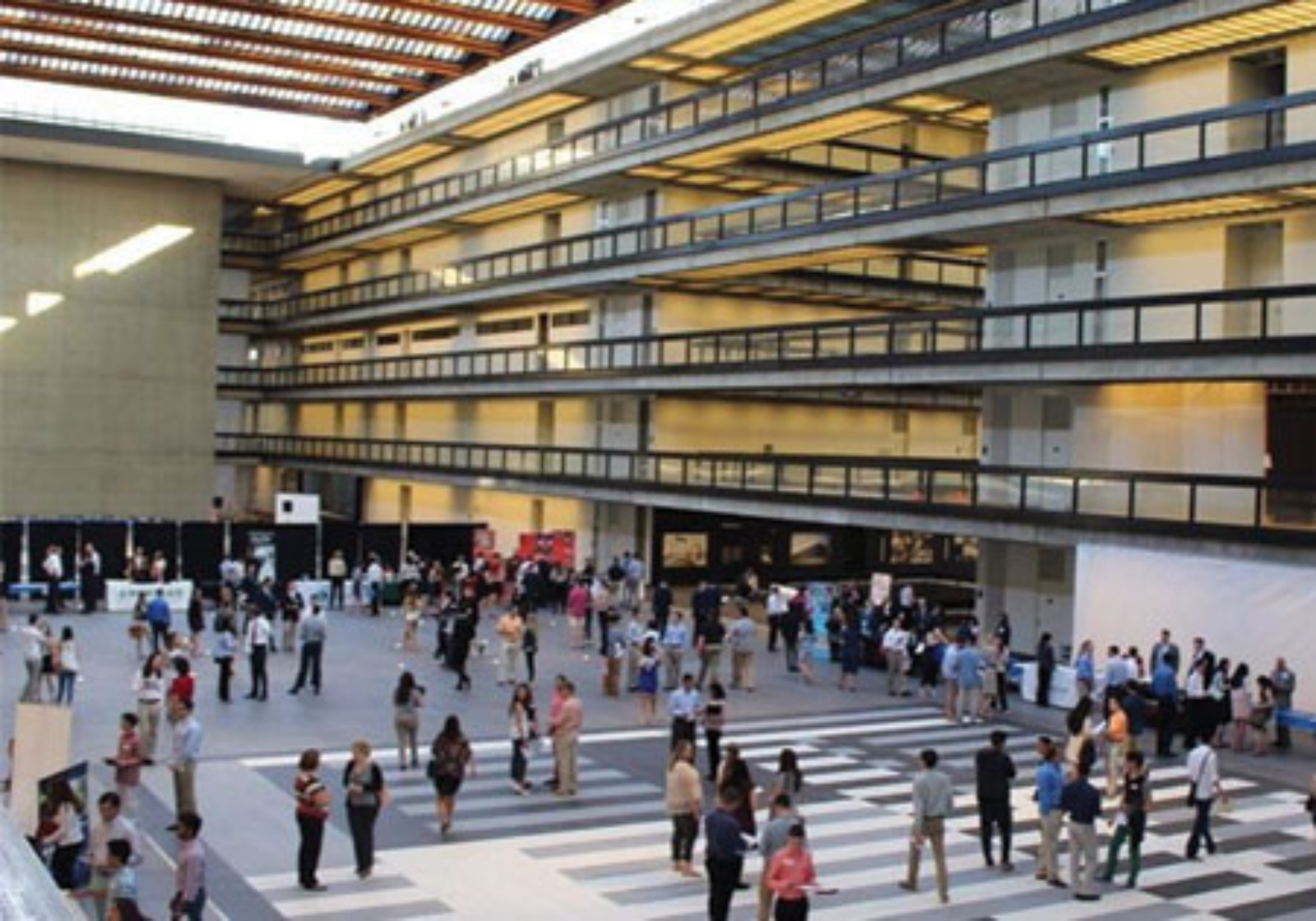 By Gwendolyn Horton
By Gwendolyn Horton
After being abandoned in 2007, the preservation and use for Saarinen's Bell Labs in Holmdel, New Jersey has been a reoccuring topic of discussion over recent years. Purchased by Somerset Development in 2013, the vision of Ralph Zucker, President of Somerset Development to reinvent the space as a "New Urbanist Hub" has begun to be realized.
Mayor Hinds, 230 students and 50 companies participated in the recent job fair hosted by Bell Works
As of June 1, 2016, 20% of the 1 million square feet of office space has been leased to a variety of companies, including several tech firms. Ten office tenants have already moved in and WorkWave will take occupancy of its 72,000-square-foot space in early 2017. Mayor Eric Hinds hosted a 50-company career networking event at Bell Works last May, and the New Jersey Bisnow Conference was held here on June 15. A café and deli have opened in the complex, and an area of astro-turf in the large atrium has become a popular gathering spot for Friday-night soccer games.
The article below was first published in 2014 in the Design Within Reach Blog "Design Notes."
New Jersey-native Ralph Zucker purchased the property in 2013, and his firm is transforming the 472-acre campus in Holmdel, New Jersey, into a health and wellness-anchored “metroburb” called Bell Works that will include a skilled nursing facility and assisted-living center, a hotel, restaurants and shops, a spa, office spaces and a 20,000-square-foot public library. Luxury homes and an outdoor sports complex are also planned for the surrounding land.

Built in 1962 and expanded in ’66 and ’85, the building has been vacant since 2007. Photo by Gwendolyn Horton
As for how Saarinen’s mirrored masterpiece will be preserved, Zucker says not to fret: “From the conversation pit to the light-filled hallways and atrium to the mirrored glass-clad exterior, we are staying true to Saarinen’s vision for a collaborative space that’s conducive to wandering and interacting.”
An example of Zucker’s careful approach is the carpet in the conversation pit, which has been restored to its yellow-nested-squares design. While researching the carpet, lead architect Alex Gorlin thought it resembled the “Homage to the Square” paintings that Josef Albers painted between 1950 and 1976, so he contacted the Josef and Anni Albers Foundation. Unfortunately, the foundation believes the carpet was inspired by, but not necessary designed by, Albers. Because Eero and Josef were fellow faculty members at Yale in 1949, it’s possible that they collaborated on the floor covering at some point.

Photo by Gwendolyn Horton
The carpet sparked a relationship with the foundation, and Gorlin decided to introduce Albers’ work to Bell Labs in a different way. He commissioned two installations for the atrium floor, where they can be viewed from multiple angles and heights. Titled “Goldrosa” and designed by Albers in 1926, the artwork was enlarged to a pedestrian scale and recolored – with the foundation’s permission – into shades of black, white and gray. “The spatial interpenetration of the building itself can be seen in Albers’ pattern,” says the architect. “We’re continuing Saarinen’s idea of nested squares.”
Gorlin was hired for the Bell Works redesign “because we felt he’d be the most respectful to Saarinen’s work,” says Zucker, citing the architect’s strengths in both modernism and classicism, and his renovation of the only surviving synagogue designed by Louis Kahn. As soon as Gorlin was on board, he and Zucker flew to Italy to see the Fiat Lingotto factory built in the 1920s and renovated by Renzo Piano in the 1980s. Transforming the Fiat building into a multiuse center while maintaining its architectural identity was a challenge, but Piano’s successful result helped shape what’s planned for Bell Works.
With so much focus on the future of the site, it’s also important to remember Bell Labs’ impressive past. Some of the most important scientific discoveries of the twentieth century happened within these walls, including fiber-optic communications, touch-tone dialing, the UNIX operating system and cellphones. Exciting innovations continue today as Gorlin, Zucker and their teams find ways to modify the building into a mixed-use complex. There was much to learn from this building when it was first designed, and now that it’s been saved and allowed to evolve, the lessons will continue. For that, we’re truly grateful.

